The first wayfinding app for museums
Our promise: help the visitor to find his way by giving meaning and context to his visit, thanks to step-by-step instructions given in real time.
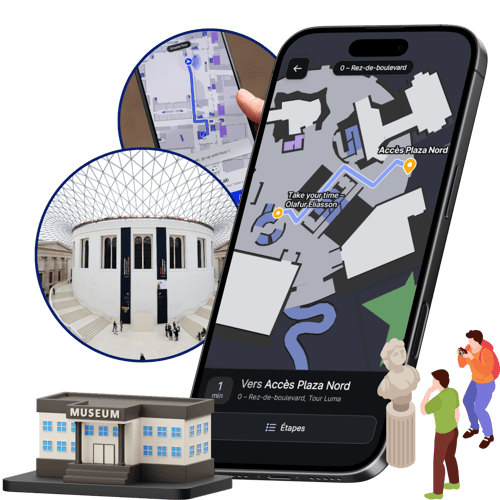
The smartphone for a better visit experience
Museums are often complex places. The smartphone allows the visitor to orientate and move around easily in an autonomous way, and to fully access the cultural offer.
Evelity provides interfaces and itineraries adapted to each visitor's profile, with or without disabilities. Thematic tours enrich the visit all along the route.
25%
of visitors are looking for a better way to orient themselves and find their way in museums
10th
is the position of Google Maps in the most downloaded applications. But which gps to use in a museum?
Reviews from lost visitors
"Difficult not to get lost in the museum, despite the map provided."
"Very nice building but a little lost at first on what route to take."
"Signage too small and too little light to properly read descriptions of the works."
Reviews collected on Google Maps in 2021.
Evelity: an inclusive application for all your visitors !
A great accessibility expertise that benefits all your visitors
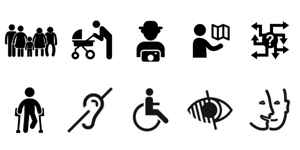
- Adapted tours
- An accessible interface
- A multilingual application
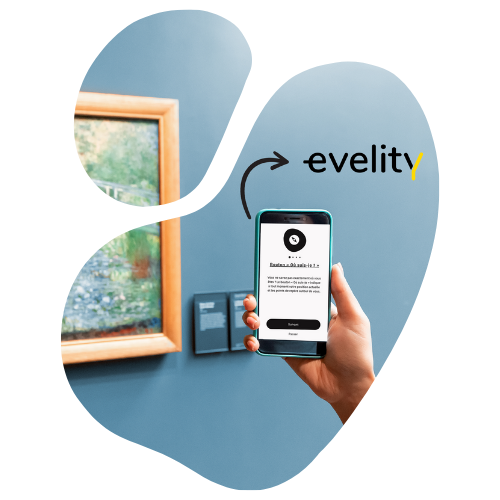
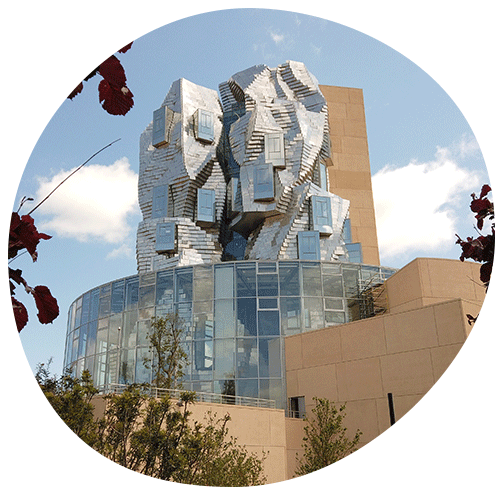
The solution of the interior GPS was identified quite quickly. This solution allowed us to offer disabled people the same flexibility as all other visitors while having very little impact on the architecture of the place. With Evelity, the possibility of managing both guidance and mediation appealed to us because the application becomes a support for all, while providing a reinforced service for those who need it most.

The most important thing in a museum is the way I am welcomed, the service provided, the technology available. The museum must be pleasant for everyone. I have enough space, the pathways are intuitive, I feel safe to enjoy the experience.

Cultural venues must be accessible to all
Think big, act big and offer your visitors an effortless and anxiety-free experience.
- Encourage your visitors' independence with individual and autonomous visits
- Offer fluid and personalized tours, without having to look at a map
- Offer selective and geolocated mediation content
- Share useful information easily
- Offer a free application to your visitors
.png)
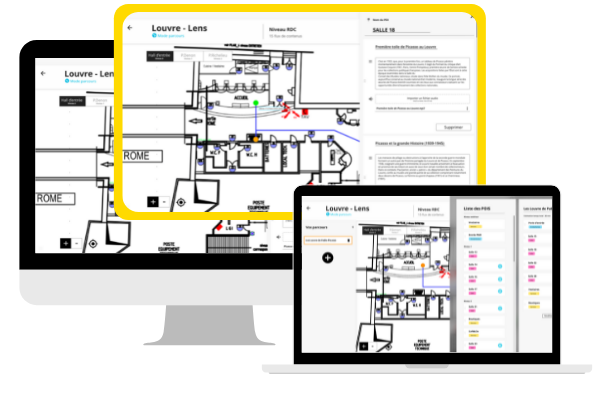
A turnkey solution
We deploy and configure the solution for you, in a few days!
- Rely on a discreet and scalable solution (no work required)
- Access users statistics of the application
- Close temporarly the access of exhibition rooms
- Manage your museum tours and content by your own
- Benefit from unlimited remote support
Shall we tell you a little more ?
Okeenea : who are we ?
Okeenea Digital is a subsidiary of the Okeenea Group, specialists in the conception and supply of accessibility solutions since 1993 ! Among other things, we invented the audible beacons for traffic lights. For the past 2 years, we have been innovating with the Evelity digital indoor guidance solution for all types of disability, for all types of public buildings.
How does Evelity work ?
Within Evelity, we provide a turnkey solution allowing precise mapping and navigation inside your building open to the public.
But concretely, how does it work ? Our team studies the plans of your facilities and defines the implementation of a network of bluetooth beacons. Thanks to these beacons, we can guide your travelers from a point A to a point B.
We integrate a technological layer of type "sensor fusion" allowing the localization of the user's smartphone by integrating a network of beacons (bluetooth beacons) and the GPS to treat the surroundings of the buildings. We add algorithms to the geographical data sources to associate the "raw" position with its "probable" position on a location. This is the indoor geolocation technology.
Building open to public : micro-location VS indoor geolocation
Micro-location in building open to public is a limited technology that allows to locate a person when he is close to a beacon (point of interest or landmark). It does not allow a precise and continuous indoor wayfinding.
Indoor geolocation, on the other hand, allows indoor navigation like a GPS, with an accuracy of 1m50 and step-by-step instructions. With Evelity, this is the technology we use, recommend and improve every day.
How long will it take to deploy the solution ?
It depends on the surface to be equipped with Evelity, it can go from a few days to tens of days. Contact us to find out more!
- Recovery of maps and POIs to cover
- Location scouting
- Implementation plan of the infrastructure
- Validation by the client
- Installation of beacons and settings
- Creation and routing of locations in the application. Adding geocalized contents.
- Tests and settings
- It's delivered!
Becoming a museum accessibility model: how to proceed?
Culture for all is a universally recognized notion. We, as human beings, depend on culture, in all its forms, to understand our society, to be part of it, to think differently... If you are a curator or a museum director, you are probably sensitive to this and you are keen to offer your visitors the best possible experience. But what about visitors with disabilities? What solutions can you put in place to make your museum accessible to them?
Not only does an accessible museum mean welcoming all types of visitors, regardless of their profile, but it also means making its content understandable to all. Your mission as a museographer is to meet both of these challenges. Whether it's paintings, sculptures or documentaries, museums have a duty to make culture accessible to all their visitors. It has always been a field sensitive to accessibility and this much earlier than others. Since culture creates dialogue and connections to others and is also synonymous with social inclusion, it makes sense.
Let's take a look at some best practices to make your museum accessible!
👉 Check out the full article by Okeenea!



